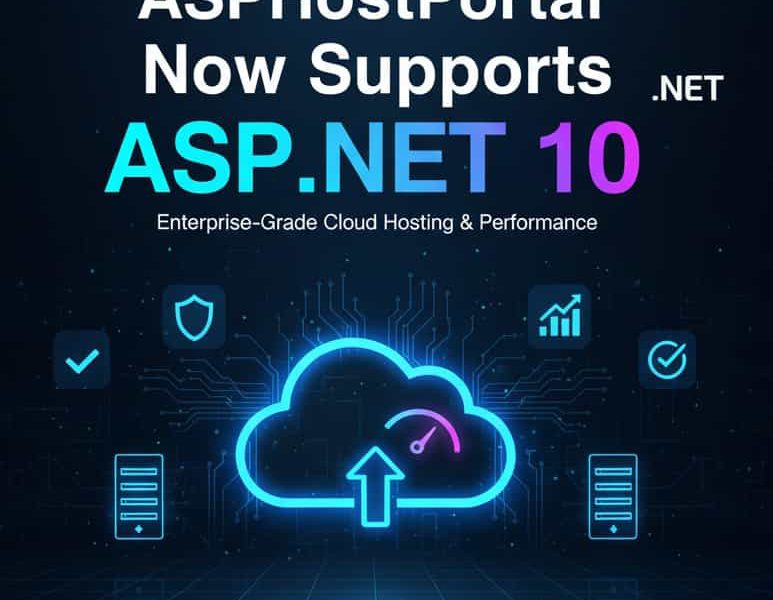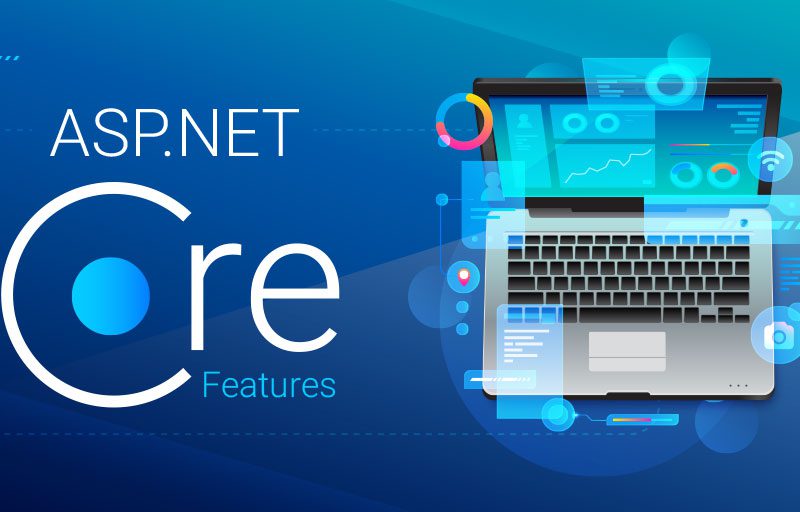You’re an experienced .NET developer. You speak fluent C#, you know the IIS pipeline like the back of your hand, and you’ve wrestled with web.config transforms more times than you can count. You’ve built robust, mission-critical applications on the ASP.NET Framework.
But for the past few years, all you hear about is ASP.NET Core.
Is it just a rebrand? Is it “ASP.NET 5”? Is it worth the hassle of learning an entirely new ecosystem when your WebForms or MVC 5 app works just fine?
ASP.NET Core is not an update or a new version of ASP.NET Framework. It is a complete, ground-up, cross-platform rewrite.
It’s not just a new name; it’s a new way of thinking, building, and deploying .NET applications. And for any .NET developer looking to stay relevant for the next decade, understanding this shift is non-negotiable.
This guide is for you, the experienced dev. We’ll skip the “what is a web server?” basics and dive straight into the key differences in platform, performance, and code that you need to know.
The Short Answer: It’s a Rewrite, Not an Update
First, let’s clear up the naming confusion.
- ASP.NET Framework (e.g., 4.5, 4.8): This is the legacy, Windows-only framework you’ve used for years. It’s part of the .NET Framework and is now in maintenance mode. It receives security patches, but no new features will be added.
- ASP.NET Core: This is the new, open-source, and cross-platform framework. It was originally built on “.NET Core.” To unify the ecosystem, Microsoft skipped version 4 and renamed “.NET Core 3.1” to “.NET 5”. This was followed by .NET 6 (LTS), .NET 7, and .NET 8 (LTS).
So, when we say “ASP.NET Core,” we’re talking about the modern web framework that runs on .NET 8 (and its .NET 5/6/7 predecessors). When we say “ASP.NET Framework,” we’re talking about the legacy framework that runs on .NET Framework 4.x.
They are two separate, incompatible platforms. You cannot run an ASP.NET Framework app on the .NET 8 runtime, and vice-versa. A migration is a porting process, not an in-place upgrade.

At a Glance: ASP.NET Framework vs. ASP.NET Core
For a quick summary, here’s a high-level comparison of the concepts you know versus their new counterparts.
| Feature | ASP.NET Framework (The “Legacy”) |
ASP.NET Core (The “Modern”)
|
| Platform | Windows-only |
Cross-platform (Windows, Linux, macOS)
|
| Primary Server | Tightly coupled to IIS |
Kestrel (lightweight, in-process). Often behind a reverse proxy (IIS, Nginx, etc.)
|
| Performance | Good |
Exceptional. One of the fastest web frameworks in the world.
|
| Configuration | web.config (XML) |
appsettings.json (JSON-based), Environment Variables, Command-line args
|
| Pipeline | System.Web HTTP Pipeline (HttpModules, HttpHandlers) |
Middleware Pipeline (a chain of Func delegates)
|
| Core Assembly | Monolithic System.Web.dll |
Modular NuGet packages (e.g., Microsoft.AspNetCore.Mvc)
|
| Dependency Injection | Manual / “Bolt-on” (e.g., Ninject, Autofac) |
Built-in as a first-class citizen
|
| Project File (.csproj) | Verbose, GUID-heavy XML |
SDK-style: clean, simple, and human-readable
|
| Web Frameworks | WebForms, MVC 5, Web API 2 |
Unified MVC & Web API, Blazor, Razor Pages
|
Deep Dive 1: Platform & Hosting (The “Where”)
The single biggest difference is that ASP.NET Core unchains you from Windows.
Cross-Platform Is the New Standard
With ASP.NET Framework, your deployment target was always a Windows Server running IIS. This was a given.
ASP.NET Core is truly cross-platform. You can develop, test, and deploy your application on:
- Windows
- Linux (Debian, Ubuntu, Red Hat, Alpine, etc.)
- macOS
Why does this matter? Containers.
The rise of Docker and Kubernetes has revolutionized deployment. The ability to run your .NET app inside a lightweight Linux container is arguably the number one reason for migrating.
Goodbye System.Web, Hello Kestrel
In the .NET Framework world, your application was intrinsically tied to IIS. The System.Web.dll assembly was a massive, tightly coupled dependency that was your app’s host.
ASP.NET Core breaks this dependency. It runs as a self-contained console application (dotnet run). How? It includes its own web server.
Kestrel is the new, default, in-process web server for ASP.NET Core. It’s incredibly lightweight, cross-platform, and blazing fast. It handles all the raw HTTP requests.
“Wait, so I don’t need IIS anymore?”
- On Windows: You still use IIS, but its role changes. It no longer executes your .NET code. It acts as a reverse proxy that forwards requests to your Kestrel process.
- On Linux: You use Nginx or Apache as the reverse proxy to forward requests to Kestrel.
This architecture decouples your application from the host server, which is a massive win for flexibility and security.
Deep Dive 2: Performance & Modularity (The “How Fast”)
This isn’t a minor tune-up. ASP.NET Core is in a completely different league of performance.
Built for Speed
Thanks to Kestrel, a completely rewritten I/O pipeline, and a heavy focus on async/await from the ground up, ASP.NET Core is one of the fastest web frameworks on the planet, routinely outperforming Node.js and Go in third-party TechEmpower benchmarks.
For you, this translates to:
- Higher throughput: Handle more requests per second with the same hardware.
- Lower latency: Users get faster responses.
- Reduced hosting costs: You can run your app on smaller, cheaper VMs or container instances.
A Modular, “Opt-In” Framework
Think about all the baggage in a new ASP.NET Framework project. You were automatically opted-in to the entire System.Web monolith, including parts you’d never use, like ASP.NET Identity or Session State.
ASP.NET Core is modular. A “hello world” app is truly tiny. You start with a bare-bones host and add only the features you need as NuGet packages.
- Want MVC?
builder.Services.AddControllersWithViews(); - Want static files?
app.UseStaticFiles(); - Want authentication?
app.UseAuthentication();
This “pay-for-play” model means your applications are leaner, have a smaller attack surface, and start up faster. This philosophy also applies to the new .csproj file format. Gone are the massive XML files with every single file listed. The new SDK-style projects are clean, human-readable, and just a few lines long.
Deep Dive 3: Code & Architecture (The “How To”)
This is where you’ll feel the difference as a developer. The fundamental abstractions have changed.
The Middleware Pipeline Replaces HttpModules
This is the most critical concept to grasp.
In ASP.NET Framework, you customized the request pipeline by tapping into a rigid, event-based model in IIS, defined in your web.config (HttpModules and HttpHandlers).
ASP.NET Core introduces the Middleware Pipeline. It’s a much simpler, more powerful concept. The pipeline is just a series of components (delegates) chained together. Each component can inspect, modify, or act on the request and then either:
- Pass the request to the next component in the chain.
- Short-circuit the request and return a response.
You define this entire pipeline in code, inside your Program.cs file (in modern .NET) or Startup.cs (in older Core versions).
// Example from Program.cs in .NET 8
var builder = WebApplication.CreateBuilder(args);
var app = builder.Build();
// This is your pipeline. Order matters!
// 1. If in development, show detailed error pages.
if (app.Environment.IsDevelopment())
{
app.UseDeveloperExceptionPage();
}
// 2. Redirect HTTP requests to HTTPS.
app.UseHttpsRedirection();
// 3. Serve static files (CSS, JS, images).
app.UseStaticFiles();
// 4. Set up routing to find the right endpoint.
app.UseRouting();
// 5. Apply authentication.
app.UseAuthentication();
// 6. Apply authorization.
app.UseAuthorization();
// 7. Execute the matched endpoint (e.g., your controller action).
app.MapControllers();
app.Run();
This code-first approach is infinitely more flexible, testable, and easier to understand than hunting through XML files.
appsettings.json Replaces web.config
The monolithic, XML-based web.config is gone.
ASP.NET Core uses a new, provider-based configuration system. By default, it loads configuration from:
appsettings.json(andappsettings.Development.json, etc.)- Environment Variables
- Command-line arguments
- …and more (you can add Azure Key Vault, custom providers, etc.)
This is a massive improvement for modern development. You can override your database connection string from appsettings.json with an environment variable when you deploy to Docker, all without changing your code.
Dependency Injection is a First-Class Citizen
In ASP.NET Framework, using Dependency Injection (DI) was possible, but you had to bolt on a third-party container like Autofac or Ninject and wire it up yourself.
In ASP.NET Core, DI is built into the framework’s DNA. The framework itself uses DI to provide things like the logger (ILogger) and configuration (IConfiguration). Registering your own services is a core part of the application setup.
// Example from Program.cs var builder = WebApplication.CreateBuilder(args); // Registering services with the built-in DI container builder.Services.AddControllersWithViews(); builder.Services.AddDbContext<MyDbContext>(options => ...); // Register your own application service builder.Services.AddScoped<IMyUserRepository, SqlUserRepository>(); var app = builder.Build();
This encourages loosely coupled, testable code (like Vertical Slice Architecture or Clean Architecture) from day one, rather than as an afterthought.
MVC and Web API are Unified
Remember the confusion in ASP.NET Framework?
System.Web.Mvc.Controllerfor MVC.System.Web.Http.ApiControllerfor Web API.
They had different base classes, different pipelines, and different configuration. It was messy.
In ASP.NET Core, these are unified. Both “web pages” and “web APIs” are part of the same MVC framework. An API controller is just a controller that returns data instead of a View(). They both inherit from the same ControllerBase (or Controller) and use the same routing and middleware pipeline.
What About WebForms? Meet Blazor and Razor Pages
This is the big one for many legacy devs: WebForms does not exist in ASP.NET Core.
The stateful, event-driven, component-based model of WebForms is fundamentally incompatible with the stateless, cross-platform, middleware-based architecture of Core.
So, what are your options?
- Blazor: This is the spiritual successor to WebForms. It’s a component-based UI framework that lets you build interactive web UIs using C# instead of JavaScript. It can run on the server (Blazor Server, using SignalR) or in the browser (Blazor WebAssembly, using WebAssembly). If you loved the “write C# for my UI” aspect of WebForms, Blazor is your future.
- Razor Pages: If you have simpler, page-based apps (like a details page or a contact form) that don’t need a full-blown MVC pattern, Razor Pages is a perfect fit. It’s a lightweight, page-focused model that feels a bit like a modern, cleaner version of WebForms’ code-behind model.
The Big Question: Should You Migrate?
As an experienced dev, your time is valuable. Is a migration worth the effort?
A migration from ASP.NET Framework to Core is a rewrite, not a “lift-and-shift.” This is especially true for WebForms, which requires a total architectural rethink.
You should stay on .NET Framework (for now) if:
- You have a massive, stable WebForms application that is in maintenance mode and the business has no budget or desire to update it.
- Your application has heavy dependencies on Windows-specific technologies that have no .NET Core equivalent (e.g., WCF-server,
System.DirectoryServices, GDI+, etc.). - The application is working perfectly and there is no business driver (like performance, cost, or containerization) to justify the porting effort.
You must move to .NET Core (ASAP) if:
- You are starting any new greenfield project. There is zero reason to start a new app on .NET Framework in 2025.
- You need to improve performance and lower hosting costs.
- You want to deploy using Linux containers (Docker/Kubernetes).
- Your application is already on ASP.NET MVC 5 or Web API 2. The migration path for these is the most straightforward, as the concepts are similar.
- You want your team to be skilled in modern, relevant technologies.
Conclusion: It’s Not Just a New Framework, It’s the Future
ASP.NET Core isn’t just “the new version.” It’s a fundamental reimagining of what .NET can be: open-source, fast, modular, and at home on any platform.
For veteran .NET Framework developers, the learning curve is real. You’ll have to unlearn old habits (goodbye web.config) and embrace new patterns (hello middleware and DI). But the benefits are undeniable. You’ll be building faster, more secure, and more scalable applications that can run anywhere.
The question is no longer if you’ll need to learn ASP.NET Core, but when you’ll start.

Javier is Content Specialist and also .NET developer. He writes helpful guides and articles, assist with other marketing and .NET community work





